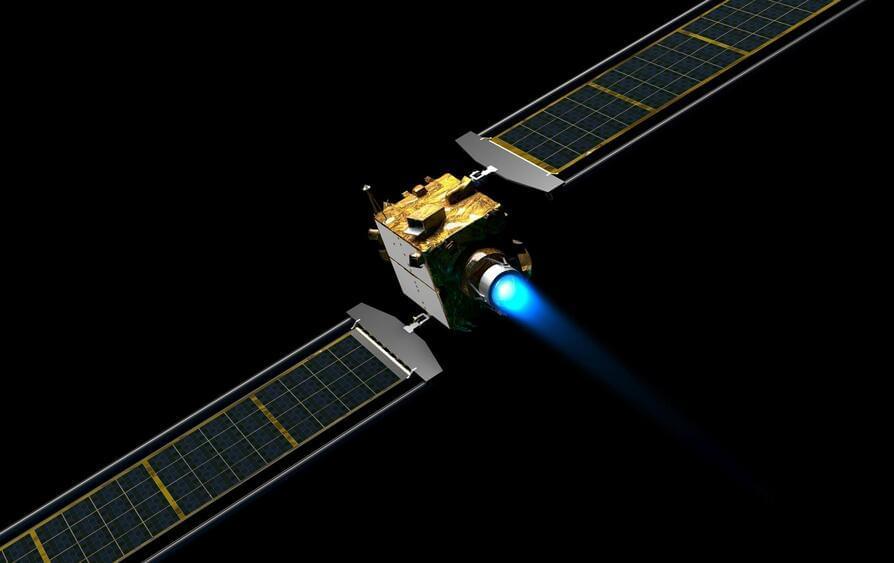Chinese robotics market is projected to expand at 20% through to 2025, when the government is aiming to double manufacturing robot density and drive adoption in key sectors including automobile and mining.



Earlier this month, Airtable announced it’s now worth $11 billion after its latest funding round. The company’s “code-for-everyone-else approach allows professionals who aren’t fluent in coding languages such as Java or Python, and don’t have their desk buried deep within the stack, to play a part in rethinking and remaking the consumer and client digital experience,” reports Riley de León of CNBC. “The low-code movement has attracted an even higher level of attention as a result of the pandemic, during which organizations from hospitals to government entities and corporations have had to develop online offerings at a faster pace than ever expected and for new use cases.”
This movement is part of an increasing democratization of programming — borne of extreme necessity. At a time when digital transformation is everywhere, “relying on IT departments and professional programmers is unsustainable,” an O’Reilly report states. “We need to enable people who aren’t programmers to develop the software they need. We need to enable people to solve their own computational problems.”

The Egyptian Space Agency (EgSA) has signed a Memorandum of Understanding with the Ukrainian Space Agency. The parties signed the MoU for cooperation in space and the peaceful use of outer space for various purposes. The primary goal is to activate mechanisms for cooperation in space activities, research and exploration for peaceful purposes. The MoU also encourages exchanging knowledge and experience between the two countries and leveraging available human resources and techniques.
The Egyptian Space Agency and the Ukrainian Space Agency signed the MoU through Dr Mohammed Al-Qussi, the Egyptian Space Agency CEO and Mr Volodymyr Tavatai, Head of the Ukrainian State Space Agency. Furthermore, the signature was in the presence of Dr Rania Al-Mashat, Minister of International Cooperation, and His Excellency Yulia Sveredenko, First Deputy Prime Minister of Ukraine and Minister of Economic Development and Trade of Ukraine. The signature also came during the eighth session of the Egyptian-Ukrainian Government Committee.
Another aim the MoU intends to realise is enhancing and facilitating the exchange of visits and bilateral meetings and workshops in various research activities. It also seeks to promote the provision of training and raise the efficiency of Egyptian specialists. The MoU will also help EgSA build capacity in space project management, develop advanced manufacturing techniques for space applications, and other priority hubs for both sides.

The Thai government is starting a new trial in Bangkok that will see electric scooters replace their gas counterparts for motorcycle taxis in the city.
The trial run could have big implications not just for Bangkok, but for scooter and motorcycle-laden cities across much of Asia.
If you’ve ever visited Thailand, you’ll surely have seen two of their most popular forms of public transportation that we don’t offer here in the West: rickshaws (tuk-tuks) and motorcycle taxis.

Any discussion on UBI eventually boils down to a question of belief in the nature of humans and the role of government. Most analysis further add wood to the fire by fueling these discussions instead of proposing valid alternatives which addresses these differences. It usually boils down to the classic question of handouts, who should pay for it, and why should we pay for it. Yet the answer lies right before our very eyes. The most valuable commodity today is data not oil or gold. Data wealth is a direct outcome of data diversity, data representation and data scale (i wrote a post on that recently which expands on that, if you’re interested). So, Instead of giving away our data for free to trickle-down techno believers (who may or may not give some of it back), pay me for it. I’ll fund my own income, thank you very much. Every human is unique. Therefore we are all data billionaires. This comment is a charitable contribution to the new data economy by the Marc O Principle; Things are not always as complex as they seem.

Just two weeks after launching from Vandenberg Space Force Base in California, NASA
Established in 1958, the National Aeronautics and Space Administration (NASA) is an independent agency of the United States Federal Government that succeeded the National Advisory Committee for Aeronautics (NACA). It is responsible for the civilian space program, as well as aeronautics and aerospace research. It’s vision is “To discover and expand knowledge for the benefit of humanity.”

If anything, the development is yet another indication of the threat actor’s capacity to continually “innovate and identify new techniques and tradecraft to maintain persistent access to victim environments, hinder detection, and confuse attribution efforts,” while also highlighting the “effectiveness of leveraging third parties and trusted vendor relationships to carry out nefarious operations.”
Microsoft had previously dubbed Nobelium as “skillful and methodic operators who follow operations security (OpSec) best practices.”
Ever since the SolarWinds incident came to light, the APT group has been connected to a string of attacks aimed at think tanks, businesses, and government entities around the globe, even as an ever-expanding malware toolbox has been put to use with the goal of establishing a foothold in the attacked system and downloading other malicious components.
“PARADOX LOST: The Public Edition, by Marshall Barnes,” Oct 6, 2014.
This book is by internationally noted research and development engineer, Marshall Barnes, and is based on his special report for select members of the United States Congress on the coming reality of time travel, which is now here on the particle level. The only authoritative book on the subject of time travel, it scientifically answers all the issues around the topic, proves why paradoxes are impossible and why the world’s physicists have been so wrong about time travel for so long. Includes definitive analysis of errors by Stephen Hawking, Kip Thorne, Paul Davies, Tim Maudlin, among others. Answers Kurt Godel’s famous question of how can a past that hasn’t passed yet, be the past, and many other issues left unanswered by all other sources.
Among outstanding features, it details Marshall’s creation of the Verdrehung Fan™, the first time machine in the world, that is sending signals through traversable micro wormholes, as speculated could be possible in New Scientist magazine, May 20th, 2014. The Einstein related physics from which it works and how Marshall used it to defeat world famous Ronald Mallett in the race to build a time machine, is revealed as well as why Mallett is far less than the media has made him seem.
Easy to read but rich in detail, this book will be a challenge for scientist and non-scientist alike, with preconceived notions about the subject, as all cliches are dismantled and discarded, revealing stunning, hidden truths that are reached without ever taking a step off the path of known physics. This is the book for those wanting definitive answers backed by definitive proofs and calculations, without dealing with the heavy mathematics.

Over 300 million dollars earmarked for developing a demonstrator.
Governments of Japan and the United Kingdom have joined hands to collaborate and develop the jet engine of the sixth-generation fighter aircraft and have signed a memorandum of cooperation to this effect, said a press release from the U.K. government.
The two countries have been exploring opportunities for collaboration for some time and are vested in the development of future combat air systems, the press release said. Earlier this year, U.K.‘s newest aircraft carrier, HMS Queen Elizabeth set out on her maiden voyage which included a trip to Japan. The U.K. intends to deepen industrial relationships in the defense sector in the Indo-Pacific region where the two countries are looking to counter China’s growing influence.
Both, the U.K. and Japan currently have their sixth-generation fighter aircraft programs underway, Defense News reported. Japan’s proposed aircraft, designated F-X, will begin replacing the formidable F-2’s in the Japanese Air Force in the mid-2030s. Earlier this year, we reported that a consortium of companies had joined forces to deliver the U.K’s six-generation aircraft and associated systems.
Full Story:
He has done his math. The questions seem to be: How to put together viable payloads to make use of Stsrship launches? How to build new markets in space?
This again?! Game Over? Busted? We’re doing Starship again so soon because I’m an unoriginal hack. There’s also been new developments in Starship and I think it’s a perfect time to revisit the launch system. Get as mad as you wish.
Will Starship live up to expectations? Will it really revolutionize space travel? Is Mars and beyond finally within grasp? Why are Musk’s fans so strangely devoted to him? Will I stop asking dumb questions?
Corrections, Clarifications, and Notes.
1. Jesus Christ I forgot about Dear Moon again. It’s clear that Starship probably won’t be human-rated by NASA by 2023. The FAA, if I remember correctly, doesn’t regulate commercial crew vehicles (like airplanes) yet. You could always do a Crew Dragon to Starship for that or something along those lines. I’d anticipate Dear Moon being pushed or somehow incorporated into an HLS demonstration.